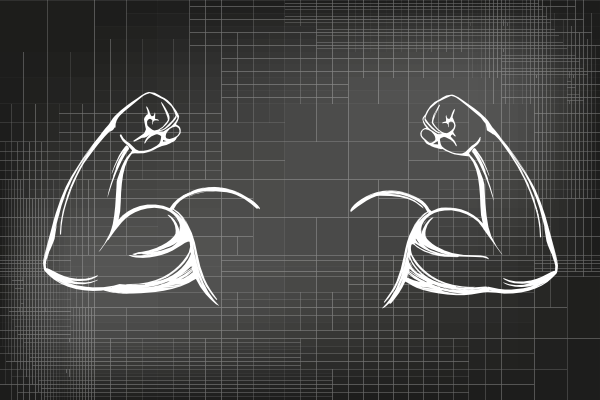Pain, tension, and weakness
Is the answer really in your muscles?

DISCLOSURE: At Body Transcendence, we will always give you our honest opinion and only endorse products and services we truly believe in. This post may contain affiliate links, meaning, at no cost to you, we may make a small commission if you decide to make a purchase through our links.
I feel so tight everywhere.
I never seem to get a deep enough stretch.
It feels like the tension is deeper inside the muscle.
Massages never seem deep enough.
My joints hurt all the time.
I have herniated discs.
I always have the same vertebrae out of alignment every time I go to the chiropractor.
I have pain/tension in my __________ and/or I feel weak in my ____________.
Like most people who have experienced any of the above, you probably think the problem is in your muscles or bones. But through this article, I’ll share with you another explanation that may just lead to a better, longer-lasting solution to these common complaints.
Muscles make sense, but what if the solution goes beyond your muscles?
People are familiar with muscles and bones as they relate to physical health. To be healthy, you need to eat well and exercise. But even when you do everything right, things still break down. Problems can arise from occasional pain to knee replacements and neck surgeries. Is it just aging or is there something we're missing?
Although health recommendations have evolved over the years, one thing has remained clear: you should look to bones and muscles for the cause of physical pain, tension, and weakness.
We focus on muscles and bones because…
It’s easy. It's easy to accept muscles and bones as the cause of pain, weakness, and aging because it aligns with how we physically feel. When you feel pain, weakness or tension, exercising more, stretching more, or getting more massages seems to help, at least temporarily.
Throughout history, muscles and bones have been obvious objects for scientific study. Their large size and distinct starting and ending points make them easy to dissect and easy to measure. And if you understand simple levers, you can easily understand how bones and muscles work.
Although the muscle/bone model is helpful to understand how the body works, it's not quite as comprehensive as it should be to tackle the complex sensations of pain, tension, and weakness. It has led to symptom-driven treatments and often temporary fixes.
Fascia is a better, three-dimensional model
Since the body is three-dimensional, it requires a three-dimensional model to explain its function. That's where fascia comes in. Rather than simple levers and tight versus weak muscles, the fascial system gives a truer picture of how the body functions. Kind of like a spiderweb in design, fascia is an endless matrix of tissue that wraps around and through every nook and cranny of the body, including bones, muscles, and organs. Since the fascial system encompasses the muscular and bone systems, treatments of fascia can be more effective for treating problems like pain, tension, and weakness than muscle or bone based treatments.
The interesting thing about fascia is it doesn't simply get tight. And since muscles are entwined in the fascia, they don't simply get tight either. If that were the case, stretching would do a better job of fixing tension. As with all three-dimensional living structures, as they get compressed (tight) the tissue gets twisted. That twisting causes tension and rotational deviations in bones, muscles, and joints throughout the body. Many factors can cause compression and twist, including childhood injuries, immobility from casts or corrective devices, surgeries, stress, and even exercises to strengthen muscles.
Structural and movement patterns begin forming before birth and are impacted throughout life. Any imbalanced pattern can't be removed without unwinding the pattern of fascial twist. Consider how a ball of yarn gets tangled. You can't simply pull or push on the knot to unwind it. That would be the equivalent of "working where it hurts" which almost never resolves the problem for long. You must follow the pattern of the tangled fibers to unwind the whole ball of yarn. In the same way, you must unwind the pattern of fascial twist in the body to fix it as well. That’s where structural integration comes in.
How structural integration can help you
Structural integration isn't just any old fascial work. It is a form of bodywork that unwinds your fascia’s specific pattern of twist. Unlike the muscle/bone model, it’s a comprehensive, three-dimensional approach to pain and tension, that has been shown to be much more effective than conventional therapies. So although conventional therapies may work specifically where it hurts, unless patterns of fascial twist are unwound, problems will remain. That is the difference between fundamental change and temporary relief.
